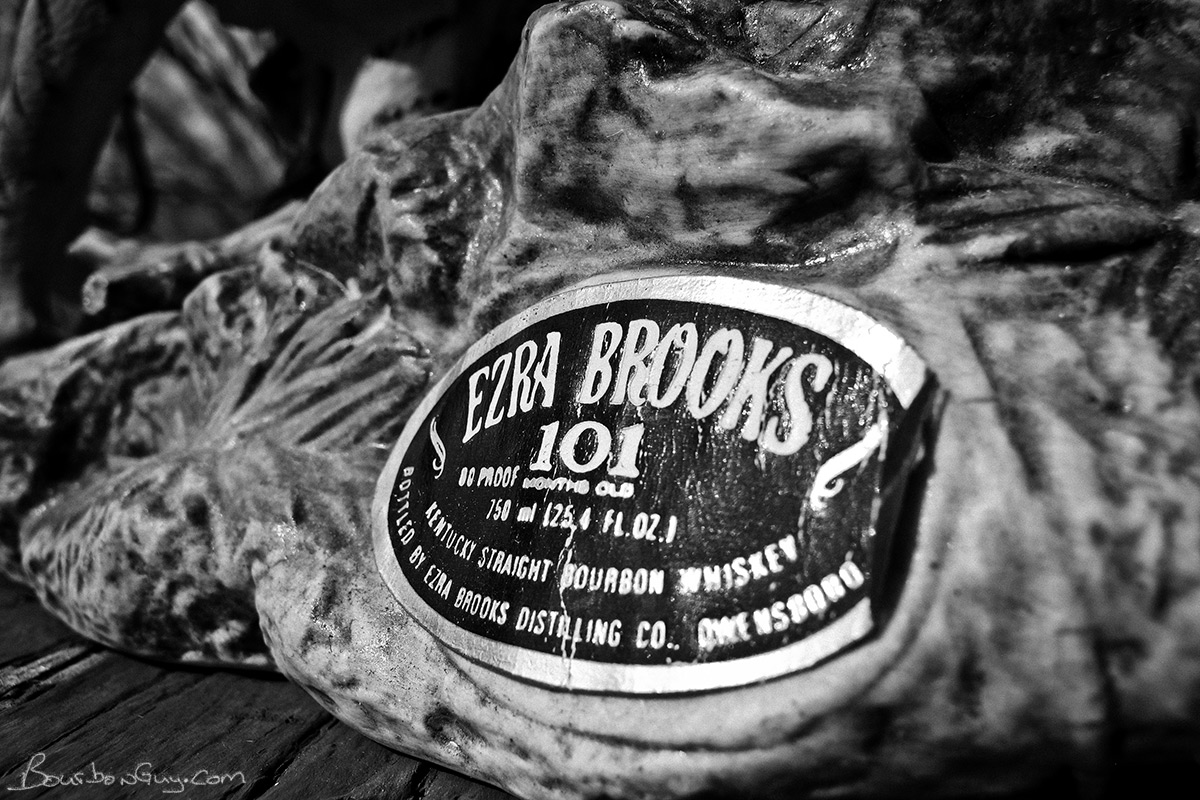In the past, I've talked about my antique-bottle project. I spend a lot of time in antique stores looking for the information for my spreadsheet. Of course, I almost never go into a store intending to purchase anything. But, of course, intend is the key word there.
Tonight's review comes from one of my antique store finds. It is a decanter of Bourbon Supreme from 1969. When I bought it, the cork was intact, and the tax seal was intact. So I decided to decant the liquid out and give it a look.
These days, Bourbon Supreme is a blended bourbon produced for select markets by Luxco. But in days of yore, Bourbon Supreme was a product of the American Distilling Company out of Pekin, Illinois. American Distilling Company was an old company, at least as far as US companies are concerned. Pre-ProWhiskeyMen mentions that the company was formed in the mid-1890s and, after taking over a few other companies, by 1908 was mashing 6000 bushels of grain per day. The company continued to grow from there, though. A 1964 article in the Chicago Tribune Magazine states that capacity had grown to 12,000 bushels per day. Of course, in the end, all things must pass and Mike Veach says that by the early 1980s American itself had been acquired by Standard Brands who was acquired by other companies until pieces of what used to be American Distilling Company found itself part of Diageo.
The Bourbon Supreme brand though did not go with the American Distilling Company. In the thread mentioned above, Mike Veach mentions that the brand passed through the hands of either Heaven Hill or Barton to its final resting spot, the David Sherman Company, today's Luxco.
Today's Bourbon Supreme doesn't sound much like anything I'd want to try, but let's see how a version from almost 50 years ago tastes.
Bourbon Supreme, Williamsburg Decanter, 1969
Purchase Info: Some antique mall in St. Paul, MN for I'm guessing under $20. (It's been a while).
Details: 86° proof, 74 months old (my label is partially torn, this info was found by searching eBay for images of the bottle)
Nose: The nose starts with vanilla and coconut that transition to fruit, caramel, and floral notes. After more time, the fruit and floral wander away to be replaced by rich leather...mmmm...caramelly leather.
Mouth: Sweet butterscotch with a little oak spice.
Finish: Light and short with distinct floral notes.
Thoughts: This has a wonderful nose, an ok mouth, and a terrible finish. It's very interesting but this might just stay a curiosity for friends to try when they visit. Serious meh on this one. Maybe it's how the decanter was handled for the last half century or maybe the stuff put into the decanter just wasn't that good to begin with.
A word on lead: There is a forum thread on straightbourbon.com that details the story of a man getting the whiskey from one of his decanters tested for lead and finding very high levels of it. I do not have the equipment to test this myself. I did, however, allow the bourbon from this decanter to evaporate and then drip the contents of a lead paint tester into the residue (saving a drop or two for the confirmation strip) and there was no red for lead. I won’t say this bourbon doesn’t contain lead or that any of the bourbons from old decanters you find will or will not contain lead. But this test satisfied my curiosity enough to allow me to do the small tasting I did for this post without fear of too much harm.
For more information on lead poisoning visit: http://www.nlm.nih.gov/medlineplus/ency/article/002473.htm
BourbonGuy.com accepts no advertising. It is solely supported by the sale of the hand-made products I sell at the BourbonGuy Gifts Etsy store. If you'd like to support BourbonGuy.com, visit BourbonGuyGifts.com. Thanks!






